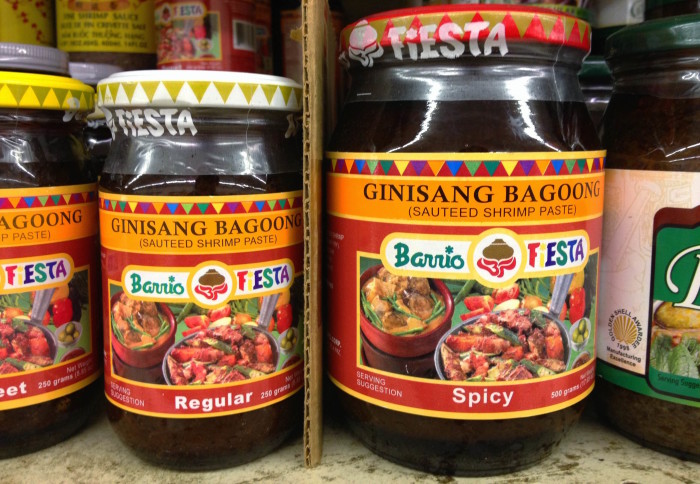Get Familiar With Bagoong, The Stinky Secret Weapon Of Philippine Cuisine
 In June, Food Republic is counting the many reasons to love Asian food in America right now. Here's one of them.
In June, Food Republic is counting the many reasons to love Asian food in America right now. Here's one of them.
Sometimes the most important ingredients are the ones you don't even realize you're tasting. Give them their proper shine, and they'll help the disparate elements of a recipe harmonize like Shai. But strike them from the equation and the entire dish crumbles. No Southeast Asian refrigerator staple lives up to this description quite like bagoong, the stinky secret weapon of Philippine cuisine.
Any Filipino worth his or her weight in pancit has a steady supply of bagoong (pronounced bah-go-ong) stashed in the refrigerator door. Made by salt-fermenting inexpensive and plentiful swimmers — such as anchovy, ponyfish or perch — for anywhere from one to three months, the paste has a muddy red-brown hue, as well as a roundhouse-to-the-face stench and a viscous consistency that helps it stick to the spoon like a sweat-soaked T-shirt. It's far from the sexiest pantry staple out there, but its intense flavor makes it an invaluable building block in Filipino cooking.
"Bagoong is so essential because it provides that umami," says Yana Gilbuena, a traveling Pinay chef who founded the Salo Project. If it's missing, "it's very noticeable. It's the X factor in our food."
Bagoong is sometimes described as a by-product of the production of patis, Filipino fish sauce, but you could argue that it should be presented the other way around. Just consider its myriad applications. You can drop it into a pan as a stir-fry starter, cooking it down with garlic and onions or countering its brininess with vinegar or calamansi juice. You can count on it when whipping up a batch of sixth-flavor-packed fried rice. It serves as a vital base flavor in dishes like binagoongang baboy, a pork and shrimp paste stew. (Bagoong alamang, with its base of fermented baby shrimp in lieu of fish, is just as common as its fish-based counterpart.) And it can also be used as an unadulterated condiment, topping the ubiquitous oxtail stew kare-kare or simply spread across fresh mango for a funky-sweet fruit snack.
Yes, the stuff is salty as hell, but that's just one facet of its utility. "A spoonful of bagoong can lend extra complexity to a dish that you can't get from salt, or even from fish sauce," says Marvin Gapultos, the Burnt Lumpia blogger and author of The Adobo Road Cookbook. And that appealing pungency can find application outside the Filipino kitchen, too. Gapultos, an advocate for commingling the traditions of the Philippines with Western cookery, has played with this concept, swapping bagoong for anchovies in a Caesar salad and relying on the paste as a marinade for steaks. Regardless of how you use it, just remember that a little bit goes a hell of a long way. "The trick is to not overdo it," he says.
Big-name bagoong varieties, like Barrio Fiesta and Tropics, are available in many Asian supermarkets, and they've been recently been joined by new-to-the-States brand JB. A single jar should last you a while — that is, until you figure out how to use it.


